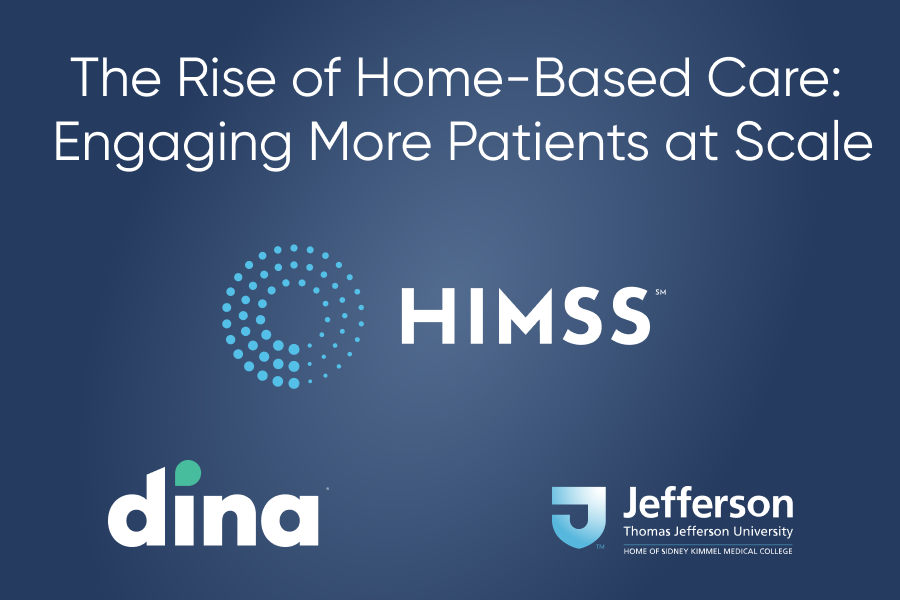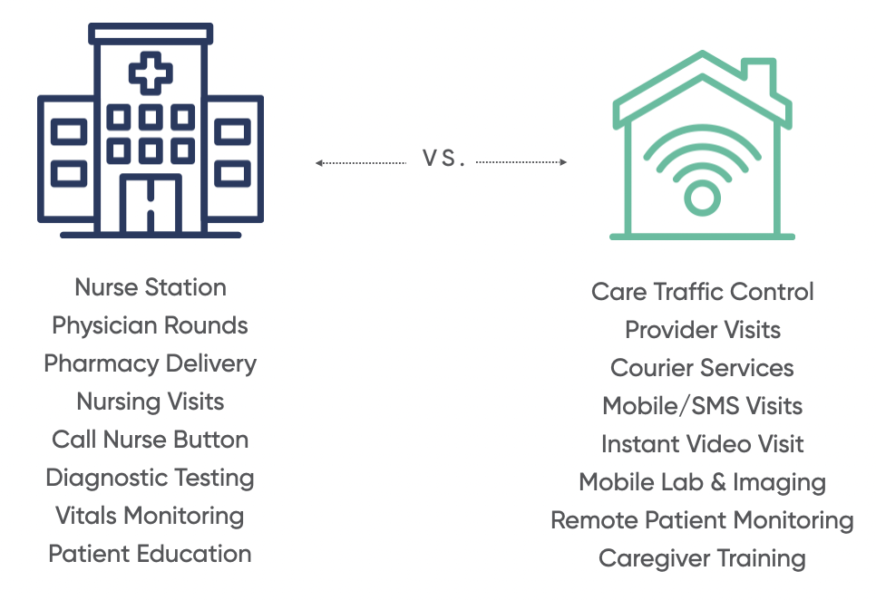
During the initial pandemic surge in 2020, Jefferson Health in Philadelphia partnered with Dina to activate remote patient engagement technology to manage Covid-positive patients who were recovering in their homes. Today, the 14-hospital health system continues to build a robust Hospital-at-Home program to move more care into the home and community.
How can health systems operationalize an at-home model to provide this level of care?
Moving Care Home: 5 Takeaways for Success
Dina CEO Ashish V. Shah and Jefferson Health’s Senior Vice President and Chief Population Health Officer Dr. Katherine Behan presented: “The Rise of Home-Based Care: Engaging More Patients at Scale,” at the HIMSS-21 Global Conference. Here are five takeaways:
Number 1: The time for health systems and managed care organizations to transition more care to the home has arrived. Hospital-at-Home models aren’t new – what is new is the collision of two trends. First, the Silver Tsunami is here. There is a large and growing number of Medicare beneficiaries and they prefer to age at home. Second, COVID-19 created regulatory pressure and pushed the market to move faster.
Number 2: It’s not easy to seamlessly transition from a facility-based care model to an in-home care model. It requires replicating the hospital room with home-based services including telehealth, remote patient monitoring, courier services, home modifications, pharmacy, home infusion, non-medical home care, and mobile imaging and radiology.
Number 3: Is your health organization prepared to implement a Hospital-at-Home model? Key factors to consider include establishing a geographical market fit, partnering with innovative payers, aligning with hospital finance and contracting teams, and evaluating target patient populations.
We have a nursing shortage and a healthcare provider shortage…managing by exception ensures no one falls through the cracks.
Number 4: We have a nursing shortage and a healthcare provider shortage, and no one has the workforce to adequately manage a remote patient population. Managing by exception ensures no one falls through the cracks. Jefferson Health used remote patient engagement technology to connect with 3,000 Covid-positive patients recovering in their homes. This included the use of predictive modeling to identify higher-risk patients in real-time to determine who required additional support.
Number 5: There is a growing number of people with chronic conditions who don’t need episodic care, but need to stay connected to their providers to manage their health at home. Using Dina’s technology, Jefferson Health identified opportunities to remotely extend care to people with complex conditions such as Congestive Heart Failure (CHF) and Chronic Obstructive Pulmonary Disease (COPD).
Looking for more information on Jefferson Health’s transition to home-based care? Watch our webinar with Becker’s Hospital Review: “The Rise of Home-Based Care: How Jefferson Health is Engaging More Patients at Scale.”





